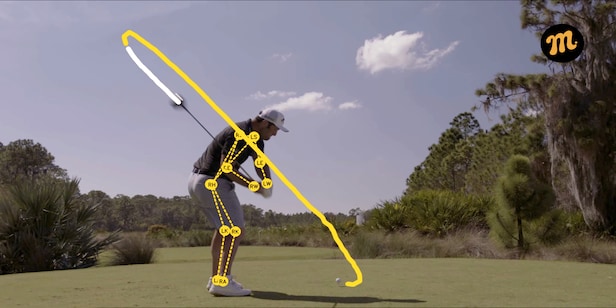The ‘not in time’ swing thought is a common mistake—but it’s an easy fix – Australian Golf Digest

- by Admin
- October 4, 2024

This article originally appeared in the Golf IQ newsletter, which is available exclusively to Golf Digest+ subscribers. You can subscribe to Golf Digest+ right here.
The human brain takes about 100 ms to process information, then about another 100 ms to decide to move in response.
Did you just blink reading that sentence? That’s about how long we’re talking about.
That’s impressively fast. The problem is it’s not quite fast enough for golfers.
Most downswings take in the realm of 250 ms. And that time isn’t equally distributed. Downswings start slow and then speed up very quickly. If we do a little educated guesstimating, it means that if your golf swing isn’t where you want it right about here, then it’s too late.
David Cannon
You haven’t hit the ball yet, but the train has left the station. Even if you wanted to make the perfect last-minute correction, you couldn’t. Your brain simply couldn’t process the information fast enough.
You may be wondering: How in the world am I supposed to make this swing thought stick, if my brain and body may not even have time to react?
Great question! Here’s how…
1. Setup changes are the most important
Golfers have maximum control over the things they do before they hit the golf ball—grip, posture, ball position—so consider those of maximum importance. You have all the time in the world to get that right. No reaction time required, and if there’s a good chance to fix something in your swing, start with your setup.
Reminder setup questions:
- Am I standing the correct distance away?
- Is my posture sharp, but relaxed?
- What does my grip look like?
- Do I have the right ball position?
- Are you balanced and tilted correctly?
- Are you aiming correctly?
2. Know where your control ends
After your setup, the best time to use a swing thought is on your backswing, especially early in your backswing.
As the Titleist Performance Institute explains, most backswings take between 750 ms and 950 ms. Your transition from backswing to downswing is pretty much where your ability to influence your swing ends, and in order to land in a good spot there, you need a swing thought which starts, at the latest, before you reach the top of the backswing.
Early backswing swing thoughts:
- Low and slow
- Reach for the sky
- Hands in, club out
- Step right, step left
 3. The ball is gone—but your swing still matters
3. The ball is gone—but your swing still matters
TPI pegs the time it takes from impact to the end of your follow-through between 500 and 800 ms. That’s plenty of time to implement a swing thought, and even though the ball is gone, trying to change the way you follow through can change what happened before it. One way you’ll often see coaches help students with this is to give them obstacles to swing around, which land their golf swing in an overall better spot.
Go-to Release drills:
- Obstacle outside toe of club to prevent over-the-top
- Swing under stick to prevent getting stuck in-to-out
- Stepping through the shot to practice weight transfer
- Straight arms pointing at target to prevent chicken wing
This article was originally published on golfdigest.com
The Latest News
-
December 21, 2024Ravindra Jadeja’s press conference Hindi-English row: What transpired during the Indian star’s interaction with Australian media | Sporting News India
-
December 21, 2024Coco Gauff declared one of the favourites to win Australian Open
-
December 21, 2024From delays to refunds: how Australia’s air passenger charter could affect your travel rights
-
December 21, 2024‘Dream come true’: Emotional Test bolter on shock call-up and classy act from man he replaced
-
December 21, 2024‘Got this wrong’: Former skipper criticises selectors’ call





